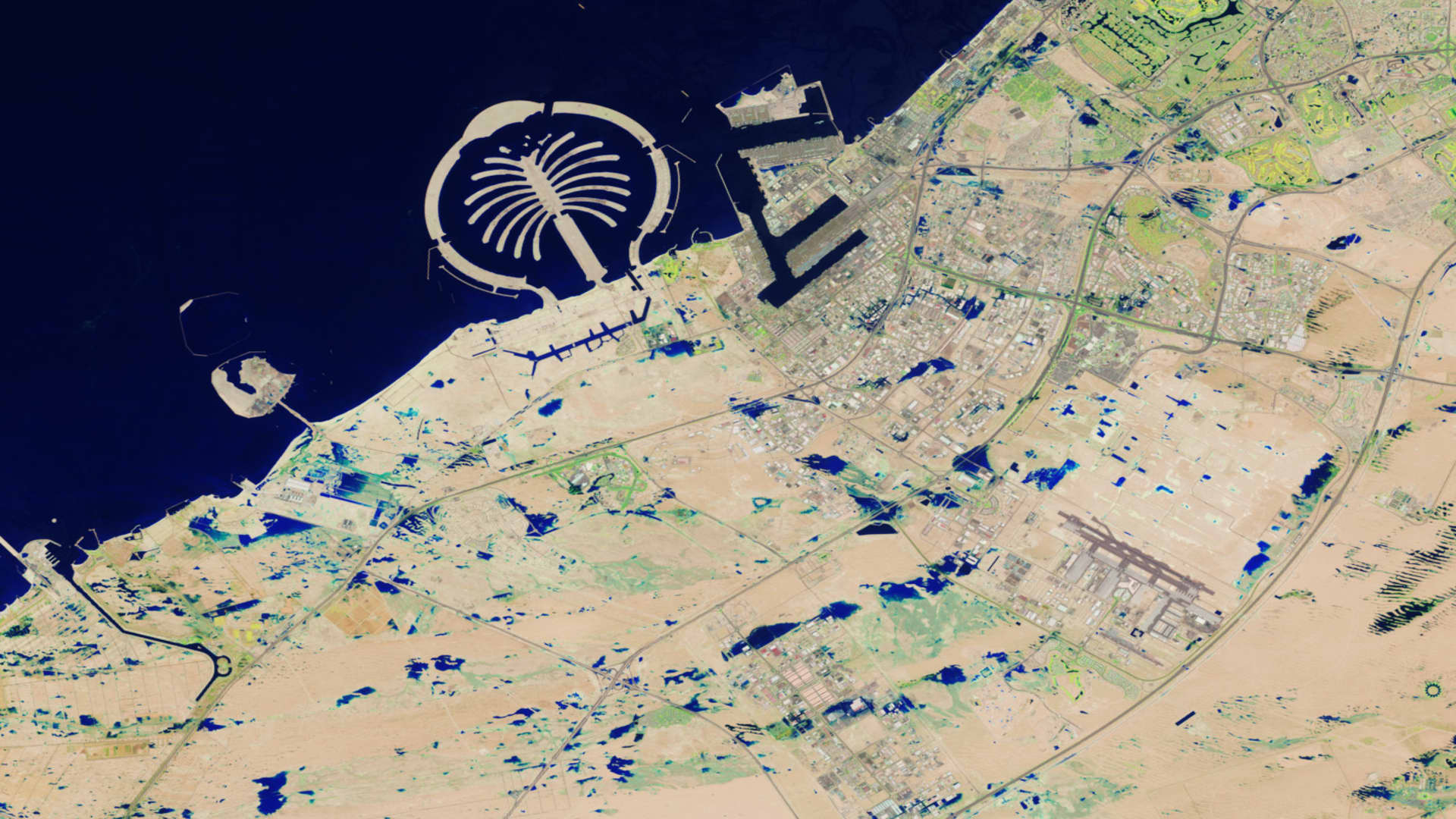
NASA has released photos of parts of Dubai and Abu Dhabi before and after the United Arab Emirates was hit last week by record rainfall that caused dangerous flooding and paralyzed much of the country.
The images, taken Friday by NASA’s Earth Observatory using Landsat data from the US Geological Survey, show vast expanses of water throughout the desert and cityscape of the United Arab Emirates, there where there were none before – almost resembling the appearance of small lakes.
“Some areas remained flooded on April 19, when Landsat 9 passed over the region for the first time since the storms,” NASA wrote on its Earth Observatory website.
Flash floods that formed on April 16 caused cars to be engulfed by water, completely submerging them in some areas, leading hundreds of drivers to abandon their vehicles on the roads to escape the rising tide. waters.
The normally dry Gulf desert country was hit with about a year’s worth of rain in less than a day, more than any in a single storm since records began for the United Arab Emirates in 1949.
Satellite photo of part of Dubai on April 3, taken by Landsat 9, an Earth observation satellite operated by a partnership between the US Geological Survey (USGS) and the National Aeronautics and Space Administration (NASA).
NASA Earth Observatory
Satellite photo of part of Dubai, United Arab Emirates, taken on April 19 as Landsat 9 flew over the area for the first time since record torrential rains hit the country on April 15-16. The image acquired with the satellite’s OLI-2 (Operational Land Imager 2) shows flooding in many parts of the emirate. The image is in false colors (bands 6-5-3) to emphasize the presence of water, which appears blue.
NASA Earth Observatory
NASA’s first image shows part of Dubai and surrounding areas on April 3, taken by Landsat 9, an Earth observation satellite operated by a partnership between the US Geological Survey and NASA. The second was taken on April 19, as Landsat 9 flew over the region for the first time since record rains hit the country.
The second image, acquired with the OLI-2 (Operational Land Imager 2) satellite, “shows flooding in many parts of the emirate. The image is in false colors (bands 6-5-3) to emphasize the presence of water, which appears blue,” NASA wrote.
The deluge closed schools and businesses, grounded hundreds of planes and destroyed cars, businesses and other property. This threw daily life into chaos as many residents lost electricity and running water or found themselves stuck either inside their homes, at airports, or wherever they were when the storm hit.
The UAE National Center for Meteorology said eastern parts of the country recorded up to 250 millimeters of rain in less than 24 hours. In contrast, over a full year, the UAE typically receives between 5.5 and 8 inches of rainfall per year.
Due to a lack of drainage infrastructure and the country’s urban spaces being paved, much of the water had nowhere to go, exacerbating flooding in many areas.
Efforts to clean up the country continue and many problems remain in some areas where infrastructure has been severely damaged and many residents say they still do not have running water or electricity.
Landsat 9 images show Abu Dhabi, the capital of the United Arab Emirates, and its surrounding areas on April 3 (left) and April 19 (right), before and after the storms. On April 19, water covered Sheikh Zayed Road, a major artery that runs through Dubai and Abu Dhabi. Patches of flooded areas are also visible in Khalifa and Zayed towns, residential areas southeast of downtown Abu Dhabi.
NASA Earth Observatory
A multi-storey apartment building near the border between Dubai and the emirate of Sharjah cracked and toppled due to structural damage caused by the storm. It was completely evacuated on Friday because it was in danger of collapsing.
The UAE’s central bank has issued a directive to local banks and insurance companies to allow loan repayment deferrals. of six months, with the aim of helping residents and businesses affected by the flooding.
cnbc





